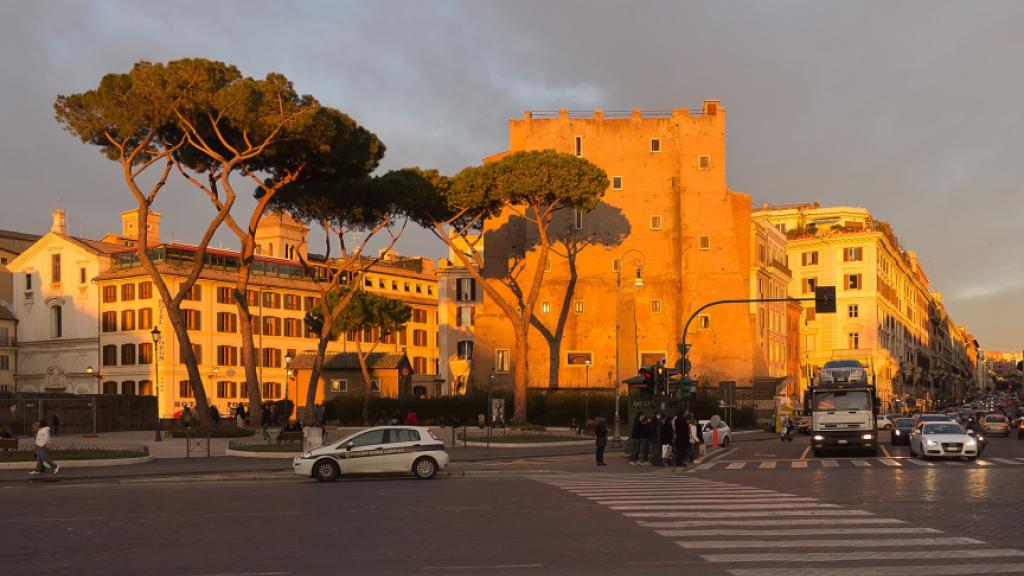
“Hope in the Rubble: Man pulled alive 12 hours after Rome medieval tower collapse”
Thank you for choosing Automatic Translation. Currently we are offering translations from English into French and German, with more translation languages to be added in the near future. Please be aware that these translations are generated by a third party AI software service. While we have found that the translations are mostly correct, they may not be perfect in every case. To ensure the information you read is correct, please refer to the original article in English. If you find an error in a translation which you would like to bring to our attention, it would help us greatly if you let us know. We can correct any text or section, once we are aware of it. Please do not hesitate to contact our webmaster to let us know of any translation errors.
Firefighters and Urban Search and Rescue (USAR) teams in Rome carried out a complex, high-risk operation after the partial collapse of the medieval Torre dei Conti on November 3, 2025. Their work highlighted the challenges of structural instability, fire protection measures, and the precision required in technical rescues.
Photo Credit: Wikipedia Creative Commons License.
The tower prior to its partial collapse.
By Dmitry Tonkonog and Ksenia Fedosova - Own work, CC BY-SA 3.0, https://commons.wikimedia.org/w/index.php?curid=23771172
The Collapse and Immediate Response
- Time and location: The Torre dei Conti, a 13th‑century tower near the Colosseum, partially collapsed during renovation work funded by the EU.
- Casualties: Several workers were trapped or injured. Three were evacuated quickly, one critically injured, and one worker—later identified asa Romanian national—remained pinned beneath rubble for over 11 hours.
- Hazards: The collapse generated massive dust clouds and was followed by a secondary collapse about 90 minutes later, forcing firefighters to retreat and reassess their tactics.
Firefighting and USAR Operations
- Scale of deployment: Approximately 140 firefighters were mobilized, supported by cranes, aerial ladders, drones, and specialized USAR equipment.
- Stabilization measures: Firefighters erected protective barriers around the trapped worker to shield him from falling debris during subsequent collapses.
- Technical rescue methods:
- Initial attempts through a first‑floor window were abandoned due to instability and falling debris.
- A drone reconnaissance was used to assess the structure and locate safe access points.
- Crews employed giant suction tubes to remove rubble through upper windows, reducing manual digging risks.
- A telescopic aerial ladder was ultimately used to extract the victim once he was freed.
- Medical support: Doctors and paramedics were integrated into the rescue, providing oxygen and monitoring the trapped worker’s condition throughout the operation.
Fire Protection and Safety Context
- The Torre dei Conti had been closed since 2007 due to safety concerns and was undergoing a €10 million restoration project.
- Renovation included asbestos removal and structural reinforcement, but the collapse revealed vulnerabilities in heritage structures under repair.
- Fire protection officials emphasized the delicate balance between cultural preservation and worker safety, noting that every extraction step risked further collapse.
Outcome and Lessons
- Rescue result: After 11–12 hours, the victim was freed, found alive and transported by ambulance. Despite continuous medical care, he died shortly after arrival at hospital.
- No firefighter injuries: Despite repeated collapses and extreme risk, no members of the fire service were injured during the operation.
- Key lessons for USAR and fire protection:
- Importance of multi‑disciplinary coordination (firefighters, engineers, medics).
- Use of drones and suction systems as innovative tools in unstable heritage environments.
- Necessity of progressive shoring and shielding to protect both victims and rescuers.
- Ongoing challenge of working in historic structures, where modern safety standards cannot always be applied retroactively.
The Torre dei Conti collapse became a showcase of Rome’s firefighting and USAR capacity—demonstrating technical ingenuity, disciplined risk management, and the human cost of structural failure in historic urban environments.
International and Italian Media Sources:
- Yahoo News / AFP – Worker dies after medieval tower collapses during renovation in Rome Read here
- Yahoo News / AFP – Worker dies in Rome after rescue from partially collapsed medieval tower Read here
- AOL / Associated Press – Medieval tower's collapse traps man, leads to 11-hour rescue mission with tragic outcome Read here
- Mathrubhumi (AFP) – Romanian worker dies after Torre dei Conti tower collapse in Central Rome Read here
- CBC News – Man extracted from partially collapsed medieval tower in Rome dies soon after Read here
- ABC News – Worker trapped for 11 hours after collapse of medieval tower in central Rome dies, prime minister says Read here
